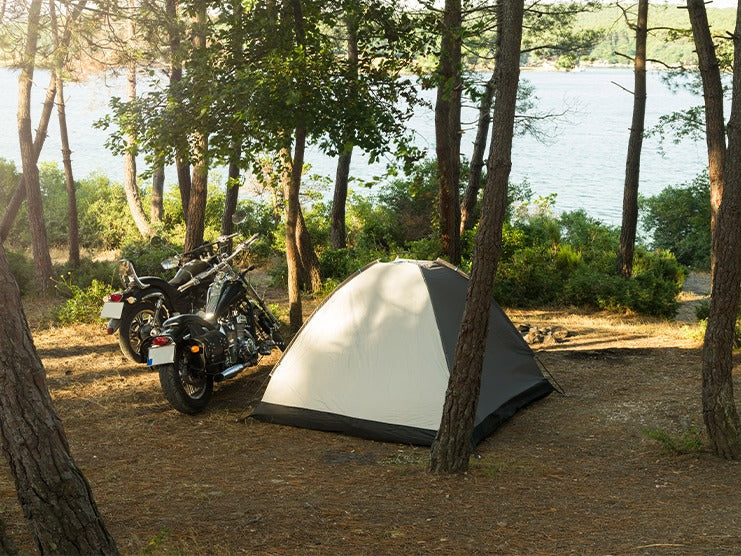Fuel injectors help transfer fuel into internal combustion engines on motorcycles. They have long since replaced carburetors that create and transfer a mixture of air and fuel to the engine to cause combustion.
Both fuel injectors and carburetors channel fuel to the engine. However, fuel injectors have better throttle response, better fuel economy, and are less harmful to the environment than carburetors. Fuel-injected motorcycles come with an air intake valve and fuel injectors that directly spray the fuel into the combustion chamber to improve fuel efficiency. Fuel injectors also require less maintenance and are more reliable, but this does not mean that they do not require attention. However, fuel injectors should be cleaned regularly to improve their performance. A better-performing fuel injector can improve the overall performance of your motorcycle.
Table of Content
This article provides the steps on how to clean motorcycle fuel injectors.
Also Read: HOW TO CLEAN A MOTORCYCLE ENGINE
1. Types of Fuel Injection Systems

| Types of Fuel Injection Systems | ||||
|---|---|---|---|---|
| Fuel Injection System Types | Also Known As | Explanation | Pros | Cons |
| Single Port Injection (SPI) | Throttle Body Fuel Injection (TBFI) |
|
Better fuel delivery to the engine | Worse engine performance at high gear levels and RPMs |
| Multi-Point Fuel Injection (MPFI) | Multiport Fuel Injection |
|
|
|
| Sequential Fuel Injection (SFI) | - |
|
|
|
| Direct Injection System | - |
|
|
|
1.1 Single Port Injection (SPI)
As the name implies, the Single Port Injection (SPI) has a single fuel injector despite the engine having multiple cylinders. It was the first type of fuel injector introduced and shares a close resemblance with carburetors. However, the major difference between the SPI and the carburetor is that the SPI improves fuel delivery to the engine after a careful pre-calculation by the Engine Control Unit (ECU).
The Harley Davidson Street 750 is one of the most popular beginner-friendly cruisers that is fitted with the Mikuni Single Port Fuel Injection (SPI) system with a 38 mm bore.
1.2 Multi-Point Fuel Injection (MPFI)
The Multi-Point Fuel Injection (MPFI) is an upgraded version of the Single Port Injection (SPI) due to having more fuel injectors corresponding to the number of engine cylinders. The MPFI also ensures better engine performance and fuel delivery. However, the MPFI is less fuel efficient than the SPI because the fuel injectors spray fuel into the cylinders whether they are already undergoing combustion or not.
Honda started producing multi-point fuel-injected motorcycles in 1983 by introducing the Honda CX500 and the Honda CX650. In 1998, Honda built its third MPFI motorcycle known as the Honda VFR800FI.
1.3 Sequential Fuel Injection (SFI)
The Sequential Fuel Injection (SFI) system is a better and upgraded form of the Multi-Point Fuel Injection (MPFI). Installed on the latest motorbikes, the SFI has the same configuration as the MPFI and has a port injection for each cylinder. The SFI is programmed to ensure optimal engine performance and better fuel economy. Unlike the MPFI, the SFI’s different ports sequentially operate and only spray the fuel when a cylinder is in the suction phase. The fuel injectors deliver fuel in turn to their corresponding cylinders during the suction phase, helping reduce fuel consumption.
The electronic sequential fuel injection system was introduced by Harley Davidson in the Softail lineup in 2001 and then later in its touring models in 2002.
1.4 Direct Injection System
The Direct Injection System directly injects fuel into the cylinders without going through the inlet manifold. This system eliminates fuel waste and is the most economic fuel injection system. However, it is currently not installed on a motorcycle as it requires a high-power source to drive the high-pressure fuel pumps. The Direct Injection System resembles a diesel engine because it was initially designed for heavyweight vehicles powered by diesel engines like trucks and buses. The Direct Injection System employs specialized, high-pressure fuel injectors to produce small fuel droplets for better combustion and lower fuel consumption.
2. How to Clean Motorcycle Fuel Injectors?
There are two ways to clean motorcycle fuel injectors depending on your level of expertise. If you are comfortable removing the motorcycle fuel injectors, first disassemble and properly clean every injector, then reassemble the fuel injection system. Alternatively, you can clean the motorcycle fuel injectors without removing the fuel injection system.
Also Read: HOW TO CLEAN A MOTORCYCLE GAS TANK
2.1 How to Clean Motorcycle Fuel Injectors by Removing the Fuel Injection System (Using Motion Pro Fuel Injector Cleaner Toolkit)

The older and slightly less effective method of cleaning the fuel injectors requires adding fuel with fuel injector cleaner into the fuel tank. This method works best if your motorcycle has not been used for a couple of months. However, if your motorcycle is parked for more than three months, remove the fuel injectors and wash them thoroughly. The most commonly used motorcycle fuel injectors cleaning kit is the Motion Pro cleaner.
- First, locate the motorcycle fuel injectors. For most motorcycles, you will have to remove the fuel tank and the air box to access the fuel injectors.
- After you gain access to the fuel injectors, pull the throttle bodies to take out the fuel injector rails. Then you can safely remove each fuel injector. Do not pull them out forcefully or you might damage the fuel injectors.
- There will be two ports on the Motion Pro tool where you can install the fuel injector from the side that connects to the engine.
- To mount the fuel injector to the tool, use the clamp to fit the fuel injector into the port.
- Use the connector to connect the other side of the fuel injector with the Motion Pro tool’s other port.
- Press the red button to turn on the 9V battery and cause the power to pass through the solenoid. This will allow the fuel injector cleaner to pass through the fuel injector.
- Using a knob, spray the fuel injector cleaner inside the fuel injector while still pressing the red button. The cleaner will wash out the dust, blockage, or debris inside the fuel injector.
- Repeat the process on the other side.
- Clean all the fuel injectors by following the same procedure.
2.2 How to Clean Motorcycle Fuel Injectors Without Removing Them
A way to unclog the inside of fuel injectors is by using additive chemicals mixed with fuel in the fuel tank. Examples of high-quality fuel injector cleaners include:
- Chevron Techron Concentrate Plus
- Royal Purple Max Atomizer
- Amsoil Performance Improver
- PJ1 Fuel Injector & Carb Cleaner
- Gumout Fuel Injector Cleaner
- Red Line Complete SI-1
All of these fuel injector cleaners should be added in small amounts mixed with fuel. The instructions for using the fuel injector cleaners will be listed on their bottles or packaging. To keep the fuel injectors clean, add fuel injector cleaner every 2,500-3,000 miles.
Also Read: HOW TO CLEAN YOUR MOTORCYCLE HELMET?
3. Frequently Asked Questions (FAQs)
3.1 How Often Should Fuel Injectors Be Cleaned?
Fuel Injectors should be cleaned every three years or 45,000 miles. However, if your motorcycle has been unused for a long time, you should first check the motorcycle’s performance and the condition of the fuel injectors. If the motorcycle does not immediately start the first time or has an inconsistent throttle response, then these are signs that the fuel injectors should be cleaned.
3.2 What Can Go Wrong If You Don’t Clean Motorcycle Fuel Injectors Regularly?
Make sure to regularly check the condition of the fuel injectors since faulty ones can negatively affect the motorcycle’s performance, reduce fuel efficiency, and damage other engine components.
3.3 What are the Signs of Clogged Fuel Injectors?
Signs indicating your motorcycle have clogged fuel injectors include the following:
- Problems trying to turn on the ignition
- Engine problems
- Inconsistent throttle response
- Slower acceleration
- Reduced fuel economy
- Rough idling
- Engine stall and failure
- Reduced high-speed performance
- Engine starts to produce excess vibrations
- Engine starts to produce irritating noises
- Smoke coming out of the exhaust
- Low power output
4. Takeaway
Fuel injectors are vital to engine parts that ensure smooth fuel delivery to the cylinders. A clean fuel injection system has several benefits, including a smoother riding experience, better throttle response, better acceleration, and higher power output. It is best to clean the motorcycle fuel injectors at regular intervals to ensure optimal fuel delivery to the engine. However, in situations where you did not use your motorcycle for a longer period and it shows problems while starting, there are better chances that the debris and dust have clogged your fuel injectors.
It is possible to clean the fuel injectors by removing or leaving the fuel injection system. However, cleaning the fuel injectors by removing the whole system helps you better see and clean every nook and cranny, especially if you haven’t used the motorcycle for months.
Cleaning the motorcycle fuel injectors is integral to the overall maintenance of your ride. However, a well-maintained motorcycle should also look good to ensure it retains value. Viking Bags has several aftermarket parts available that not only improve aesthetics, but also improve safety, such as crash bars, fairings, and sissy bars. If you want to make your motorcycle more comfortable, you can also install pulled-back handlebars. There are also different luggage options available, including saddlebags and sissy bar bags for increased storage capacity.













Leave a comment
All comments are moderated before being published.
This site is protected by hCaptcha and the hCaptcha Privacy Policy and Terms of Service apply.